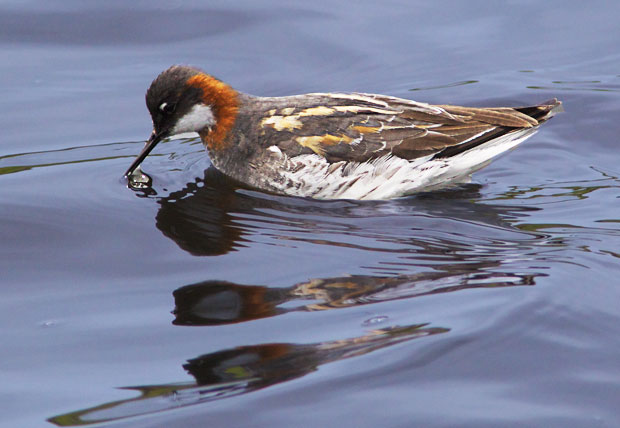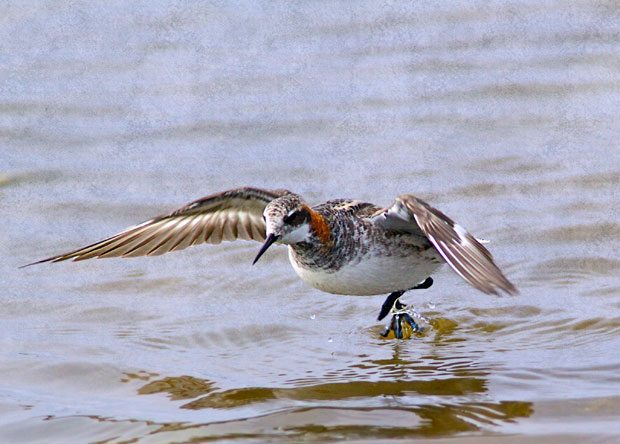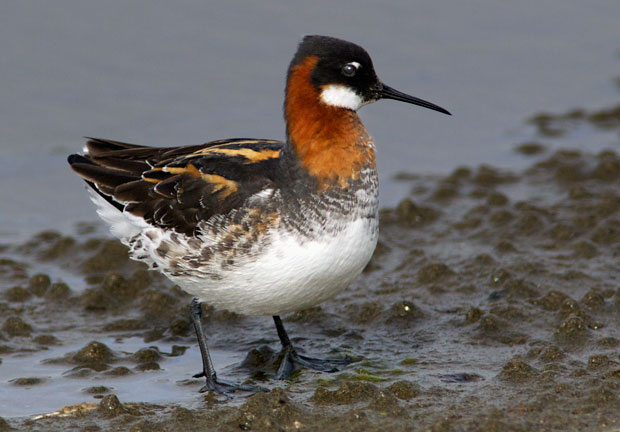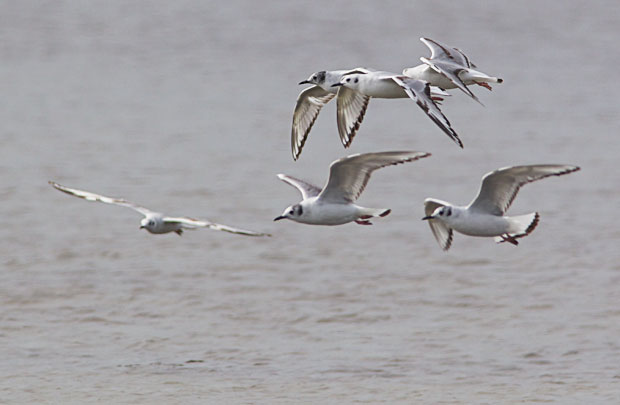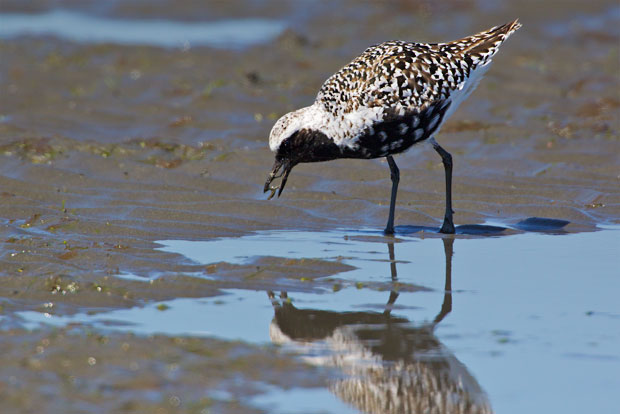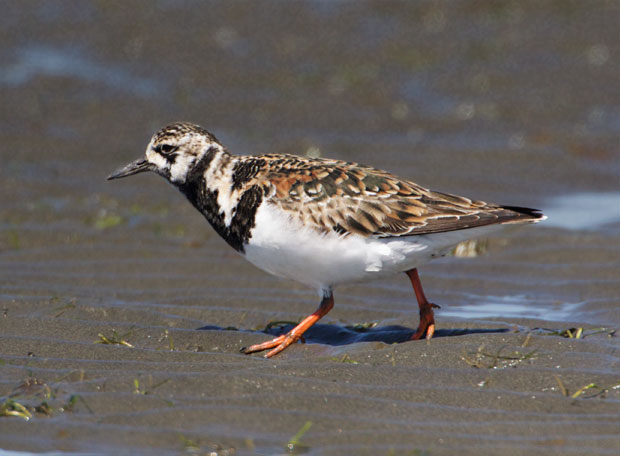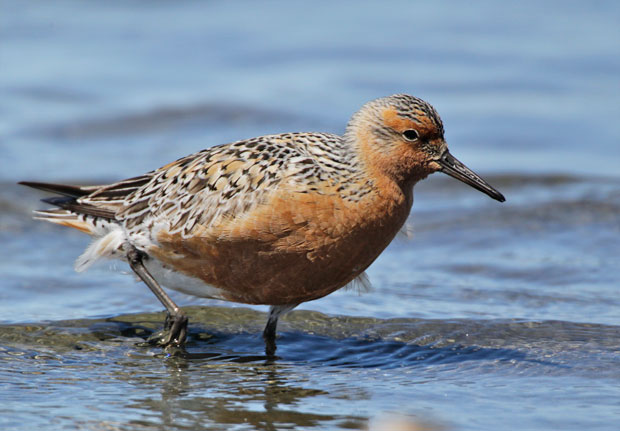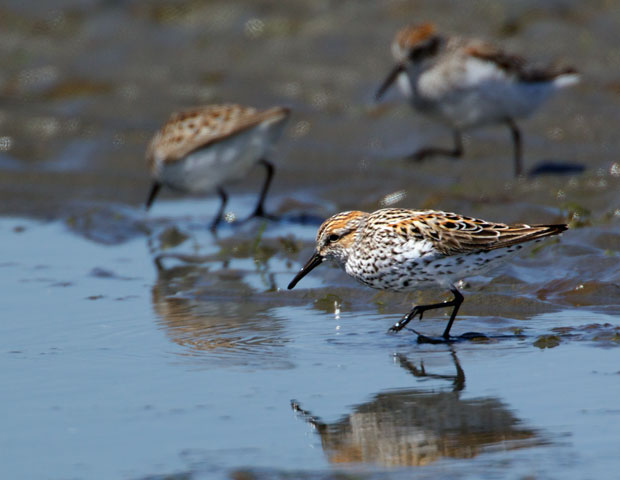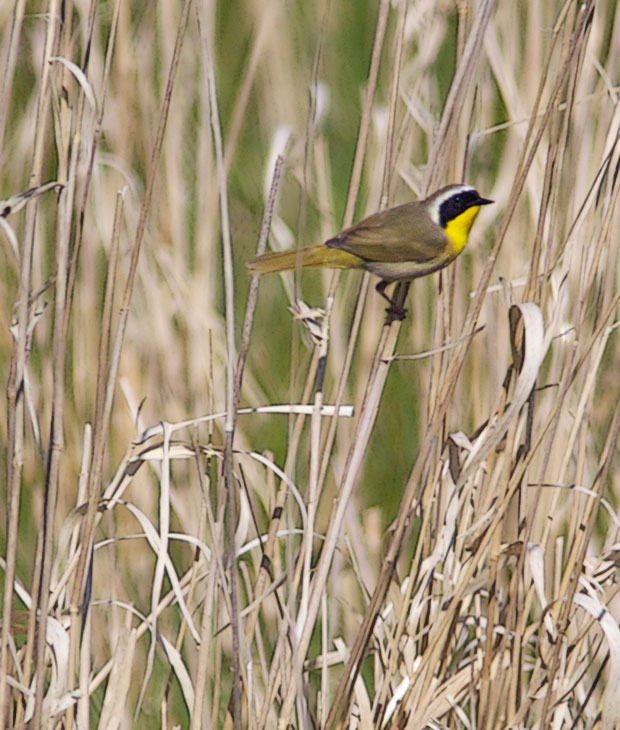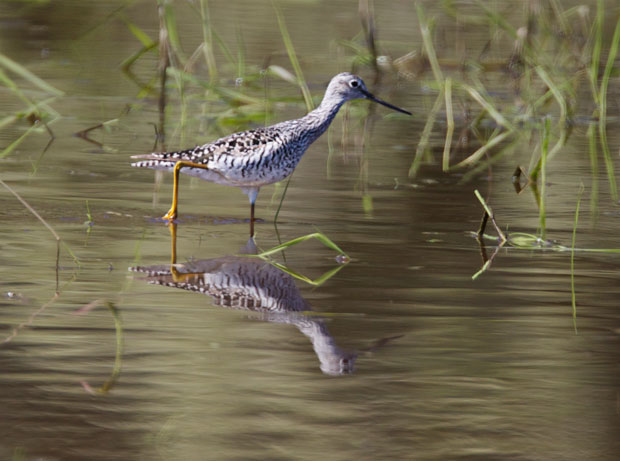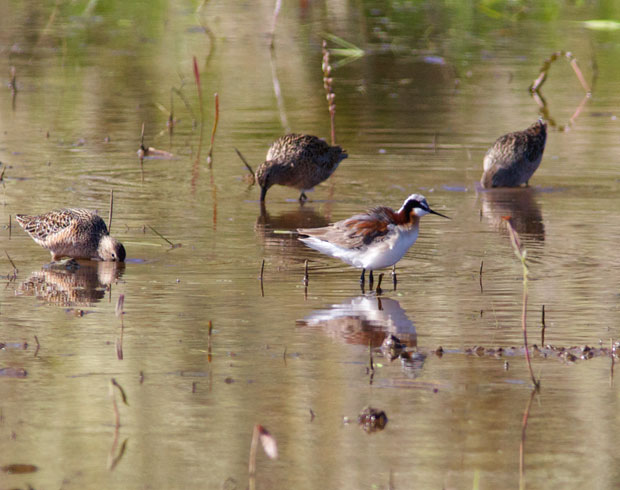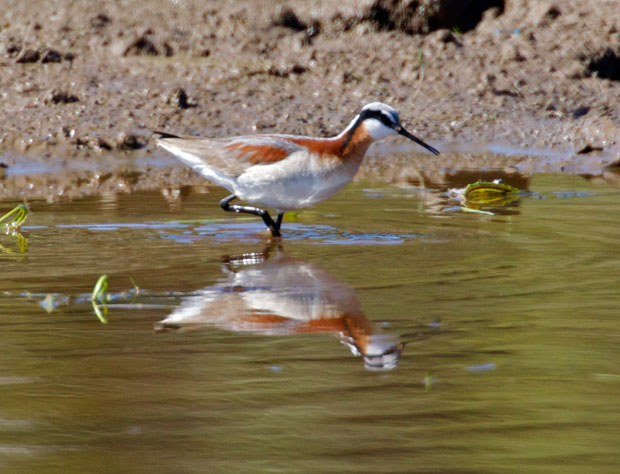If you’d asked me before last Tuesday, I would have said that the Northern Shoveler was a very sedate, sociable bird — absolutely mellow. They’re often seen in flocks and quite often mixed in with other ducks. Thus, I didn’t pay too much attention to this pair of Northern Shovelers while I focused on getting pictures of the Red-Necked Phalarope.
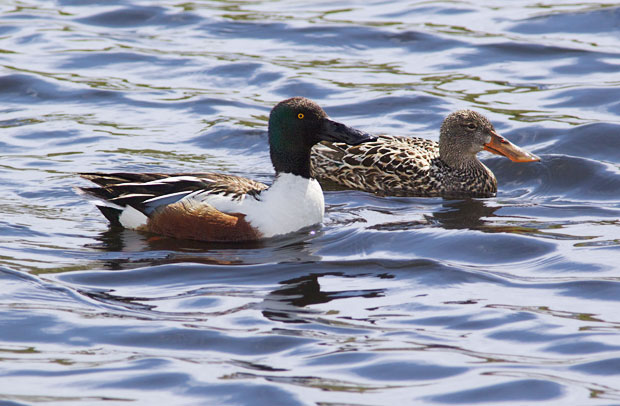
However, I heard quite a racket behind me and turned around to see two males
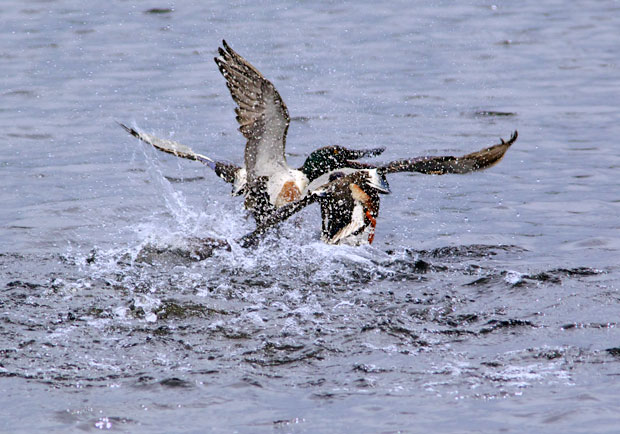
going after it. One male left, only to circle and return and the two went after it, again,
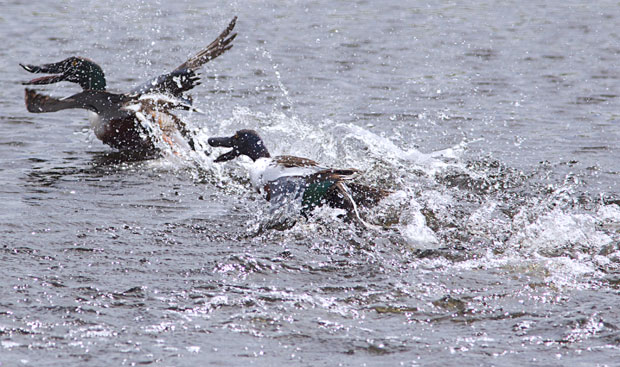
and again, for nearly a half hour,
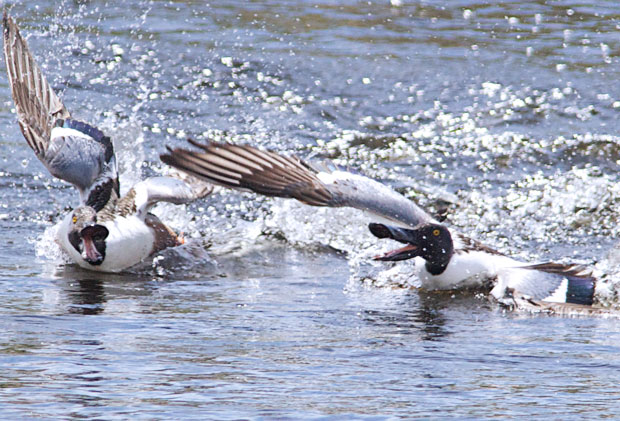
and perhaps longer because I was off to my next destination.
This display inspired me to look up more info about the Northern Shoveler. The Birds of North America Online states that “this is the most territorial of all North American dabbling ducks, and males remain paired with females longer than in other species, in turn affecting life-history parameters such as the mating system and courtship.” After the display I saw on Tuesday, I’d have to agree. When you know as little as I do, though, it’s easy to learn something new every time you go out bird watching.

